
POMPEII GETS ALL THE scientific and public attention, and it's not hard to understand why. The city buried by the eruption of Mount Vesuvius in A.D. 79 provides an endless source of artistic marvels and archaeological insight, and the cone-shaped stratovolcano still looms over Naples with familiar menace. But just on the other side of Naples' modern sprawl is a kind of shadow Pompeii called Baiae, another ancient town lost to volcanic activity-but not due to a sudden cataclysm. Once a legendary playground for Rome's elite, Baiae slowly sank to a watery end.
Thousands of years before Baiae was known as a resort destination, it would have been the worst place in the world to be. Around 39,000 years ago, the Gulf of Pozzuoli, where Baiae was eventually founded, exploded with 100 times the power of Vesuvius. The waters of the gulf, about 10 miles west of Naples, and the land surrounding it cover a supervolcano known today as the Campi Flegrei, or Phlegraean Fields, meaning the "burning" or "fiery" fields. The caldera is eight miles across, shot through with faults and speckled with 24 craters from smaller bursts on land and underwater. The volcano erupted again around 15,000 years ago, creating vast deposits of the stone called Neapolitan yellow
A mosaic floor with a geometric pattern made of black and white squares of marble called tesserae now sits at the bottom of the Gulf of Pozzuoli off the modern Italian town of Baia. The floor once belonged to a sumptuous seaside home called the Villa with the Porch Entrance in the ancient resort of Baiae tuff, which fronts many of Naples' historic buildings.
The Campi Flegrei has not erupted with that kind of force since but has nonetheless continued to shape the area. Its craters formed inviting basins for Roman ports, its geothermal activity fed hot springs that drew travelers and emperors alike, and its restlessness reshaped the topography and shoreline.
This story is from the May/June 2023 edition of Archaeology.
Start your 7-day Magzter GOLD free trial to access thousands of curated premium stories, and 8,500+ magazines and newspapers.
Already a subscriber ? Sign In
This story is from the May/June 2023 edition of Archaeology.
Start your 7-day Magzter GOLD free trial to access thousands of curated premium stories, and 8,500+ magazines and newspapers.
Already a subscriber? Sign In
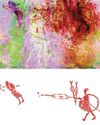
A Very Close Encounter
New research has shown that human figures painted in red on a rock art panel in central Montana depict individuals engaged in a life-or-death encounter during an especially fraught historical moment.
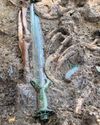
A Sword for the Ages
A zigzag pattern, now tinged with the green-blue patina of oxidized metal, adorns the octagonal hilt of a rare sword dating to the Middle Bronze Age in Germany (1600-1200 B.C.) that was recently excavated in the Bavarian town of Nördlingen.
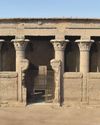
Ancient Egyptian Astrology
For centuries, layers of soot have coated the ceilings and columns in the entrance hall of Egypt's Temple of Esna. Now, an Egyptian-German team of researchers, led by Hisham El-Leithy of the Egyptian Ministry of Tourism and Antiquities and Christian Leitz of the University of Tübingen, is restoring the temple's vibrant painted reliefs to their original brilliance.
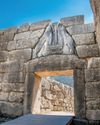
BRONZE AGE POWER PLAYERS
How Hittite kings forged diplomatic ties with a shadowy Greek city-state
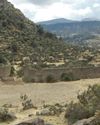
RITES OF REBELLION
Archaeologists unearth evidence of a 500-year-old resistance movement high in the Andes

Secrets of Egypt's Golden Boy
CT scans offer researchers a virtual look deep inside a mummy's coffin

When Lions Were King
Across the ancient world, people adopted the big cats as sacred symbols of power and protection

UKRAINE'S LOST CAPITAL
In 1708, Peter the Great destroyed Baturyn, a bastion of Cossack independence and culture

LAPAKAHI VILLAGE, HAWAII
Standing beside a cove on the northwest coast of the island of Hawaii, the fishing village of Lapakahi, which is surrounded by black lava stone walls, was once home to generations of fishers and farmers known throughout the archipelago for their mastery of la'au lapa'au, or the practice of traditional Hawaiian medicine. \"

A MORE COMFORTABLE RIDE
Although the date is much debated, most scholars believe people 5,000 years ago. For thousands of years after that, they did so without saddles. \"In comparison with horse riding, the development of saddles began relatively late, when riders began to care more about comfort and safety in addition to the horse's health,\" says University of Zurich archaeologist Patrick Wertmann.